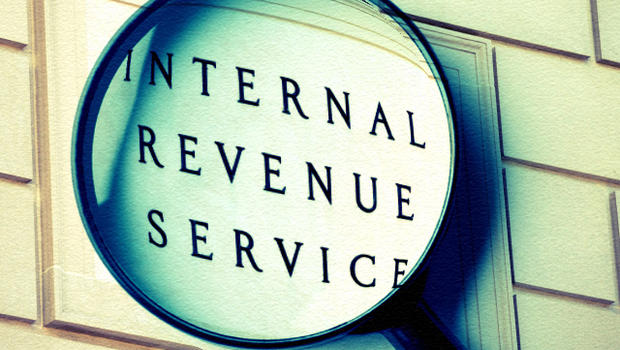
This is the time of year when certain money issues come more into focus, including those related to income-tax planning, charity scams and checking up on the financial health of family members.
Tax planning isn’t shaping up as anything remarkable over the waning weeks of 2015. Congress hasn’t passed any blockbuster legislation affecting individuals this year and, with gridlock on Capitol Hill, might not. That leaves the fate of several popular tax provisions dangling. These “extenders” must be acted on fairly soon or they won’t be in force for the coming tax-return filing season.
These include a higher-education tuition and fees deduction, a mortgage-debt forgiveness exclusion and a classroom-expense deduction for teachers.
Also in limbo is the optional deduction of state and local sales taxes in place of state and local income taxes. “That could affect your decision to make a big-ticket purchase before year end,” such as for a new car, said Mark Luscombe, principal analyst in the tax-accounting group at Wolters Kluwer in suburban Chicago.
Then there’s the option for people 70½ and older to donate an IRA distribution to charity, rather than include it first as taxable income. That one could be troublesome for some seniors trying to determine how much of their required minimum distributions to take before year end, Luscombe said. A hefty 50 percent tax penalty applies on the amount of required minimum distributions not taken.
The capital-gains rules are pretty much the same this year, with the new wrinkle that some people could be looking at sizeable losses for the first time in a while, thanks to the late-summer swoon in the stock market, Luscombe said.
In any year, investors are wise to determine paper gains and losses in taxable accounts, with an eye on realizing or harvesting losses before year end. If losses exceed gains, up to $3,000 of the excess can be used to offset ordinary income, and additional losses can be carried forward to future years.
Otherwise, taxpayers generally would be wise to defer taxable income to next year, if possible, while accelerating deductions so they can be taken in 2015. But that strategy doesn’t necessarily hold if you expect to have much larger deductible expenses next year, as with a pending medical procedure, for example.
In that case, it might pay to bunch deductions into either this year or next, if you might not qualify to itemize both years. Charitable donations are one type of deductible expense for which the timing is easy to control.
Charity caveats
Now also is a prime time for charitable donations, and non-profit groups — and scammers — know it. Americans make about one-quarter of their charitable donations over the waning weeks of the year, according to one study. That makes it critical to give money wisely, without getting so caught up in a feel-good moment that you drop your vigilance.
To make your gifts count, take some time to research the groups you intend to benefit.
Look for non-profits with missions that you agree with and search for measures of impact — the number of meals served, low-income homes built, animals rescued, or whatever. Lean toward non-profits that are run efficiently, where the bulk of the money raised goes toward programs and not overhead, including executive salaries.
GuideStar.org and CharityNavigator.org provide broad non-profit databases that you can search, including Form 990 disclosures filed with the Internal Revenue Service that provide detailed information on operations, including the compensation of top executives. Charity Navigator also rates larger non-profits on a four-star scale. Another research sources is give.org, from the Better Business Bureau.
It’s wise to verify that a charity is for real. Crooks sometimes seek money from unsuspecting donors, often through on line phishing blasts or cold calls over the phone. Be especially cautious when asked to provide credit-card numbers or bank account information. Some fake entities use names that sound similar to legitimate non-profits, with the aim of confusing unwary donors.
 Despite all the work to keep our personal and financial information safe, it’s still possible to become the victim of fraud. (Photo: maxkabakov/Getty Images/iStockphoto)
Despite all the work to keep our personal and financial information safe, it’s still possible to become the victim of fraud. (Photo: maxkabakov/Getty Images/iStockphoto)
Another option is to search through the “exempt organizations select check” section at irs.gov, although this database can be cumbersome. If you donate to a non-profit that isn’t legitimate and claim a tax deduction, your deduction could be disallowed, and you might trigger an audit.
In fact, consider whether you can take advantage of a charitable tax donation. Roughly 2 in 3 Americans don’t itemize and thus won’t get the deduction. An alternate option, especially if money is tight, might be to donate your time instead of your cash.
Family matters
Holiday get-together offer an opportunity to check the financial health of friends and family members — elderly relatives especially. Many seniors are affluent yet susceptible to giving away their money for reasons that could involve fear, loneliness, cognitive problems and so on.
Strangers account for more than half the financial fraud committed against the elderly, but family members, friends and neighbours sometimes can cause problems, too.
Wells Fargo Advisor’s suggests watching out for several tell-tale signs that things might be amiss. Some are obvious, such as large, unexplained loans taken out by an elderly person or personal belongings that have gone missing. Also, watch for wire transfers or large credit-card charges, gifts to a caretaker, utility or other routine bills not being paid, and changes to the person’s will or other estate-planning documents.
“A sudden increase in spending and atypical, big withdrawals would be red flags to me,” said David Jacobsen, an investment vice president with Wells Fargo Advisor’s in Mesa.
Another tell-tale sign could involve an elderly client seeking to buy risky assets that are out of character with the person’s stated investment objectives.
Jacobsen said it can be a good idea for elderly clients to sign emergency contact forms, before the need arises, authorizing a trusted adviser to speak with adult children or other relatives in case of emergencies or if they sense a problem. Otherwise, account-privacy laws could block such communication.
“We try to get the whole family involved,” Jacobsen said. If adult children or other family members have permission to receive account statements, “They can watch from a distance.”
Other signals could be more subtle, such as a new friend or sweetheart in the elder person’s life, a sudden reluctance to discuss financial matters, or behaviour changes such as fear, submissiveness, social isolation or withdrawal.
Seniors generally are trusting and willing to answer the phone or door. That can make them vulnerable to a sales pitch, fraudulent or otherwise, Wells Fargo said. Plus, they can be confused by financial offers, and they’re often reluctant to report fraud out of fear or embarrassment.
(Source: http://www.usatoday.com/story/money/business/consumers/2015/10/23/seasonal-planning-now-taxes-charities-more/74325400/)





 Despite all the work to keep our personal and financial information safe, it’s still possible to become the victim of fraud.
Despite all the work to keep our personal and financial information safe, it’s still possible to become the victim of fraud. 